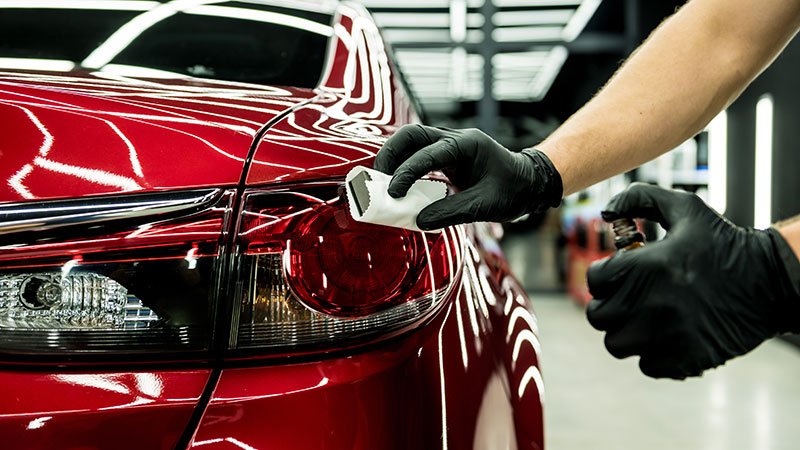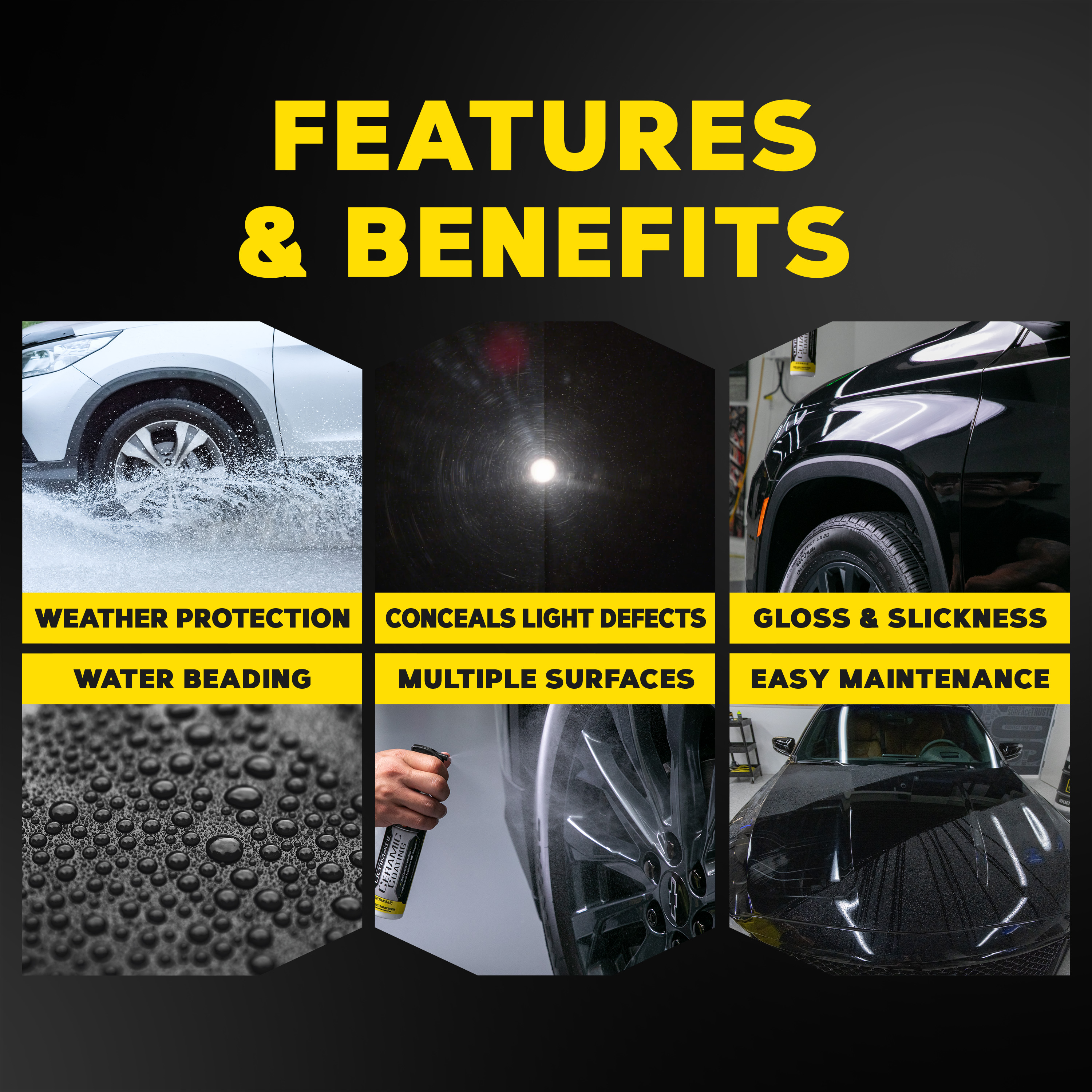Comprehensive Vehicle Treatment Solutions Supplied by Ceramic Coating Philadelphia Specialists
Comprehensive Vehicle Treatment Solutions Supplied by Ceramic Coating Philadelphia Specialists
Blog Article
Why Ceramic Finish Is the Ultimate Service for a Perfect Finish
Ceramic covering has actually arised as a leading remedy for those looking for a perfect finish for their cars, thanks to its amazing longevity and protective features. What aspects really set ceramic layer apart?
What Is Ceramic Coating?

When applied properly, ceramic layer creates a hydrophobic surface that drives away water and dirt, making it less complicated to maintain and clean. Unlike standard waxes or sealers, which usually supply brief security, ceramic coatings can last for numerous years, depending upon the product high quality and application method. The process of applying ceramic finish requires meticulous prep work, consisting of thorough cleansing and sometimes repaint improvement, to make sure ideal bonding and effectiveness.
Ceramic finishings are not limited to vehicle surfaces; they can likewise be utilized on numerous products, consisting of glass, metal, and plastics, offering a functional service for boosting security. Generally, ceramic finishing stands for a considerable innovation in surface area defense technology, integrating both visual and practical benefits for a large range of applications.
Advantages of Ceramic Layer
While numerous surface defense alternatives exist, the advantages of ceramic finishing attract attention because of its distinct buildings and resilient performance. Among the key benefits is its outstanding sturdiness. Ceramic Coating Philadelphia. Unlike standard wax or sealants that need constant reapplication, ceramic finishings supply a resilient layer that can last for numerous years, substantially minimizing upkeep initiatives
One more noteworthy benefit is enhanced security against environmental impurities. Ceramic coverings develop a hydrophobic surface area that pushes back water, dirt, and numerous pollutants, making it easier to clean. This feature not just maintains the car's look however additionally lessens the risk of corrosion and oxidation, specifically in harsh weather conditions.
Moreover, ceramic layers provide exceptional resistance to UV rays, preventing fading and deterioration of paint gradually. This UV defense is critical for preserving the aesthetic worth of cars and surface areas exposed to guide sunlight.
Additionally, the shiny finish attained with ceramic finish boosts the total visual appeal, providing surface areas a showroom-quality shine. In general, ceramic layers represent a substantial advancement in surface defense technology, providing enduring advantages that cater to both visual and practical demands.
Just How It Works
Understanding the science behind ceramic finishes exposes just how they supply such amazing defense and longevity. At its core, a ceramic covering is a liquid polymer that chemically bonds with the automobile's manufacturing facility paint. This bonding develops a protective layer that is both hydrophobic and oleophobic, repelling water, dust, and oil. The main component of the majority of ceramic finishings is silicon dioxide (SiO2), which is originated from quartz. This substance adds to the covering's hardness and resistance to scrapes, UV rays, and ecological impurities.
The application process involves several steps, including surface area prep work, which is essential to accomplishing optimum attachment. When used, the finish undertakes a curing process, during which it sets and forms a semi-permanent bond with the paint surface. This bond is what identifies ceramic coverings from traditional waxes and sealants, offering a longer-lasting safety obstacle that can endure for several years.
In addition, the density of the coating can enhance its safety high qualities, pop over to these guys guaranteeing that it can hold up against rough problems. Eventually, the science of ceramic coatings incorporates innovative products with innovative application methods to provide an unequaled level of security and aesthetic improvement for vehicles.
Comparison With Traditional Approaches
The advantages of ceramic coverings end up being specifically apparent when compared to traditional paint protection approaches such as waxes and sealants. While waxes supply a short-term shine, typically lasting a few weeks to a couple of months, ceramic coatings give a lasting safety layer that can sustain for numerous years. This durability significantly lowers the frequency of reapplication, making ceramic layers a much more affordable solution over time.
Additionally, standard approaches typically require considerable preparation and multiple applications to achieve a sufficient degree of defense. On the other hand, ceramic coverings bond at a molecular level with the car's surface area, creating a robust shield versus environmental impurities like UV rays, acid rainfall, and roadway salts. This bond boosts the car's resistance to scratches and swirl marks, which prevail with traditional waxes and sealants.
Furthermore, the hydrophobic buildings of ceramic finishings ward off water and dust, causing simpler cleaning and maintenance. On the other hand, wax and sealant-treated surface areas can draw in grime, demanding even more regular washing - Ceramic Coating Philadelphia. Overall, ceramic coverings not only give superior protection yet likewise provide a much more visually enticing visit this website and long-lasting surface, developing them as the preferred option for critical car owners
Application and Upkeep Tips

Utilizing a foam applicator, use the coating in little sections, following the producer's Full Report standards regarding thickness and overlap. Permit sufficient curing time between layers, commonly 1 day, to make certain correct bonding. After application, it is crucial to prevent direct exposure to water or rough components for a minimum of a week to allow the finish to fully heal.
In addition, utilizing a ceramic upkeep spray can enhance the coating's hydrophobic residential or commercial properties and longevity. Normal inspections for any type of signs of wear will help maintain the coating's stability and protect that immaculate finish.
Conclusion
In final thought, ceramic coating emerges as an exceptional choice for achieving a perfect automobile coating. By developing a durable bond with factory paint, ceramic coating successfully guards against scratches, UV rays, and environmental pollutants.

Report this page